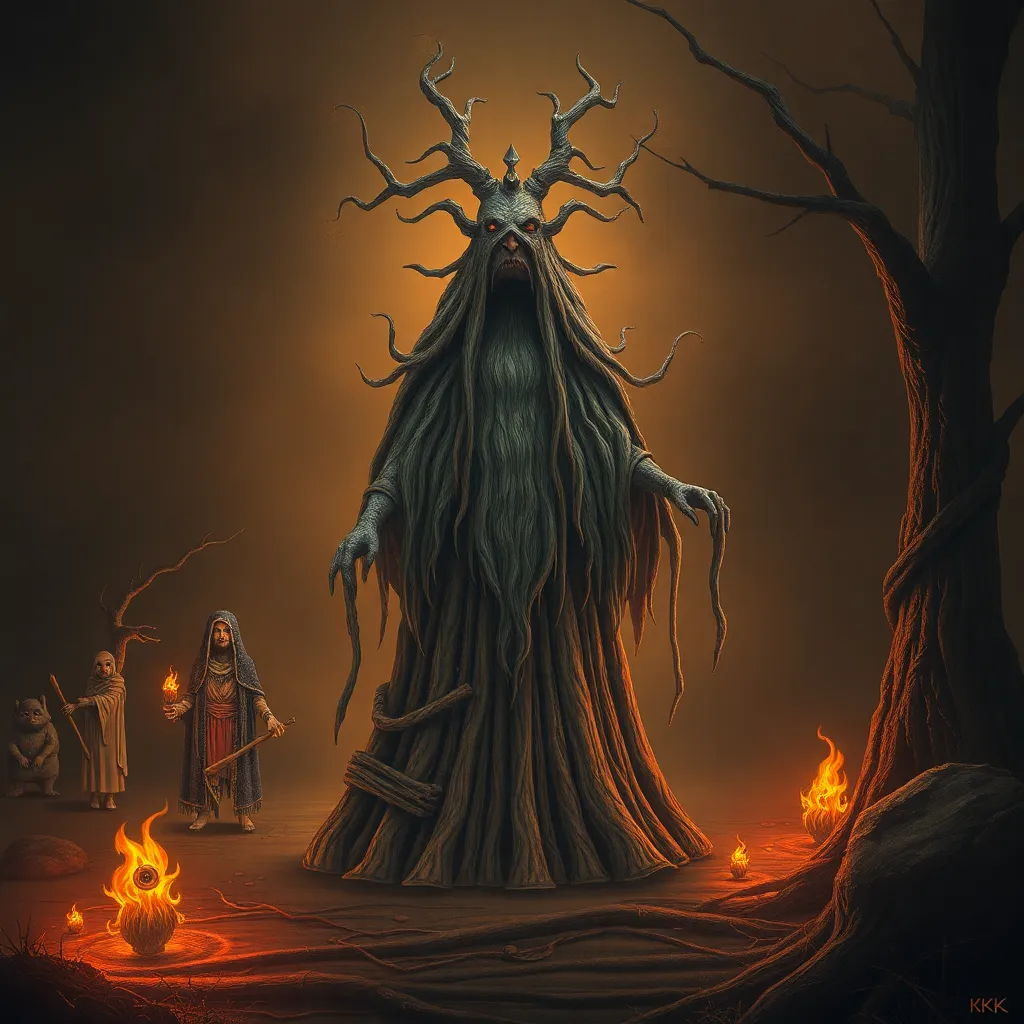The Serpent’s Bite on the World Tree: Níðhöggr and the Mesopotamian Cosmology
I. Introduction
Níðhöggr, a fearsome dragon in Norse mythology, plays a central role in the lore surrounding Yggdrasil, the World Tree. This creature is not merely a terrifying beast; it embodies themes of destruction and regeneration that resonate through the fabric of Norse cosmology. Yggdrasil itself symbolizes the interconnectedness of all worlds, serving as the axis mundi that binds the cosmos.
In contrast, Mesopotamian cosmology presents a rich tapestry of creation myths, deities, and symbols that also explore the complexities of life and death, order and chaos. This article aims to draw parallels and contrasts between Níðhöggr and the serpentine motifs found in Mesopotamian mythology, revealing deeper insights into the nature of existence as understood by these ancient cultures.
II. Níðhöggr: The Dragon of Yggdrasil
Níðhöggr is often depicted as a dragon or serpent that gnaws at the roots of Yggdrasil, embodying decay and destruction. Its presence is a constant reminder of the inevitable cycle of life and death that permeates Norse mythology.
Characteristics of Níðhöggr include:
- Physical form: A formidable dragon-like creature.
- Symbolic role: Represents chaos and the destructive forces of nature.
- Connection to death: Feeds on the corpses of the dead in Hel, the realm of the deceased.
Níðhöggr’s role in Norse mythology extends beyond mere destruction; it symbolizes the cyclical nature of existence. Its constant gnawing at Yggdrasil’s roots signifies the ongoing struggle between life and death, creation and destruction.
III. The World Tree: Yggdrasil’s Structure and Significance
Yggdrasil is described as an immense ash tree that connects the Nine Realms, each representing different aspects of existence. The tree’s branches stretch into the heavens, while its roots delve deep into the underworld, symbolizing the interconnectedness of all life.
Key features of Yggdrasil include:
- Branches: Represent the various realms, including Asgard (the realm of the gods) and Midgard (the human world).
- Roots: Connect to different realms such as Niflheim (the realm of the dead) and Helheim.
- Life-giving entity: Nourishes all beings, signifying the source of life and sustenance.
Yggdrasil is not only a physical structure but also a vital symbol of life, representing the unity of all beings and the cyclical nature of existence.
IV. Mesopotamian Cosmology: An Overview
Mesopotamian cosmology is rich with creation myths that depict the origins of the universe and the establishment of order from chaos. Central to these myths are powerful deities who embody various aspects of the cosmos and its creation.
Key elements of Mesopotamian creation myths include:
- Chaos vs. Order: The universe begins in a chaotic state, from which order is established by divine beings.
- The role of trees: Trees serve as symbols of life, fertility, and the connection between the heavens and the earth.
- Serpents: Often depicted as guardians or symbols of chaos that must be vanquished.
These myths reveal a worldview where chaos is ever-present, and the struggle for order is a central theme. Trees and serpents emerge as significant symbols, representing both life and the tumultuous forces that threaten it.
V. Serpents in Mythology: A Comparative Analysis
Serpents play varied roles in both Norse and Mesopotamian myths, often embodying duality as both guardians and destroyers. In Norse mythology, Níðhöggr represents chaos, while in Mesopotamian myths, serpents may symbolize the primal chaos that is eventually subdued.
Some contrasting narratives include:
- Níðhöggr: A creature of destruction, continuously gnawing at the roots of Yggdrasil.
- Mesopotamian serpents: Often depicted as guardians of the divine or as challengers of gods, reflecting the constant battle between order and chaos.
This duality illustrates how cultures interpret serpents differently, with Níðhöggr representing a more destructive force in Norse mythology, while Mesopotamian serpents embody both protection and the potential for chaos.
VI. The Interplay of Chaos and Order
Níðhöggr’s existence within Yggdrasil highlights the theme of chaos that is intrinsic to Norse cosmology. Its constant threat to the tree symbolizes the fragility of life and the inevitability of death.
In contrast, Mesopotamian deities, such as Marduk, are celebrated for their triumph over chaos, establishing order in the cosmos. The balance between destruction and creation is a recurring theme in both mythologies:
- Níðhöggr: Represents the chaos that continuously threatens the stability of existence.
- Mesopotamian deities: Embody the struggle to bring order from chaos, often engaging in battles against serpentine beings.
This interplay underscores a shared acknowledgment of chaos as a fundamental part of life, whether through Níðhöggr’s destruction or the Mesopotamian gods’ battles to maintain cosmic order.
VII. Cultural Interpretations and Modern Relevance
The stories of Níðhöggr and the serpents of Mesopotamian cosmology continue to resonate in contemporary culture. Their themes explore the duality of existence, the struggle between chaos and order, and the cyclical nature of life and death.
Modern adaptations can be seen in:
- Literature: Works inspired by Norse and Mesopotamian myths often explore themes of existential struggle.
- Art: Visual representations of Níðhöggr and Mesopotamian serpents highlight their symbolic significance.
- Media: Films and video games frequently draw on these myths, reimagining ancient stories for contemporary audiences.
These cultural reinterpretations illustrate how ancient myths continue to inform our understanding of human nature and the existential themes that permeate our lives.
VIII. Conclusion
In summary, the exploration of Níðhöggr and Mesopotamian cosmology reveals profound insights into the nature of existence, chaos, and order. Both traditions highlight the significance of serpents and trees as symbols of life and destruction, emphasizing the cyclical nature of existence. The enduring legacy of these myths across cultures speaks to their power in shaping our understanding of the human experience, illustrating the timeless struggle between chaos and the quest for order.



